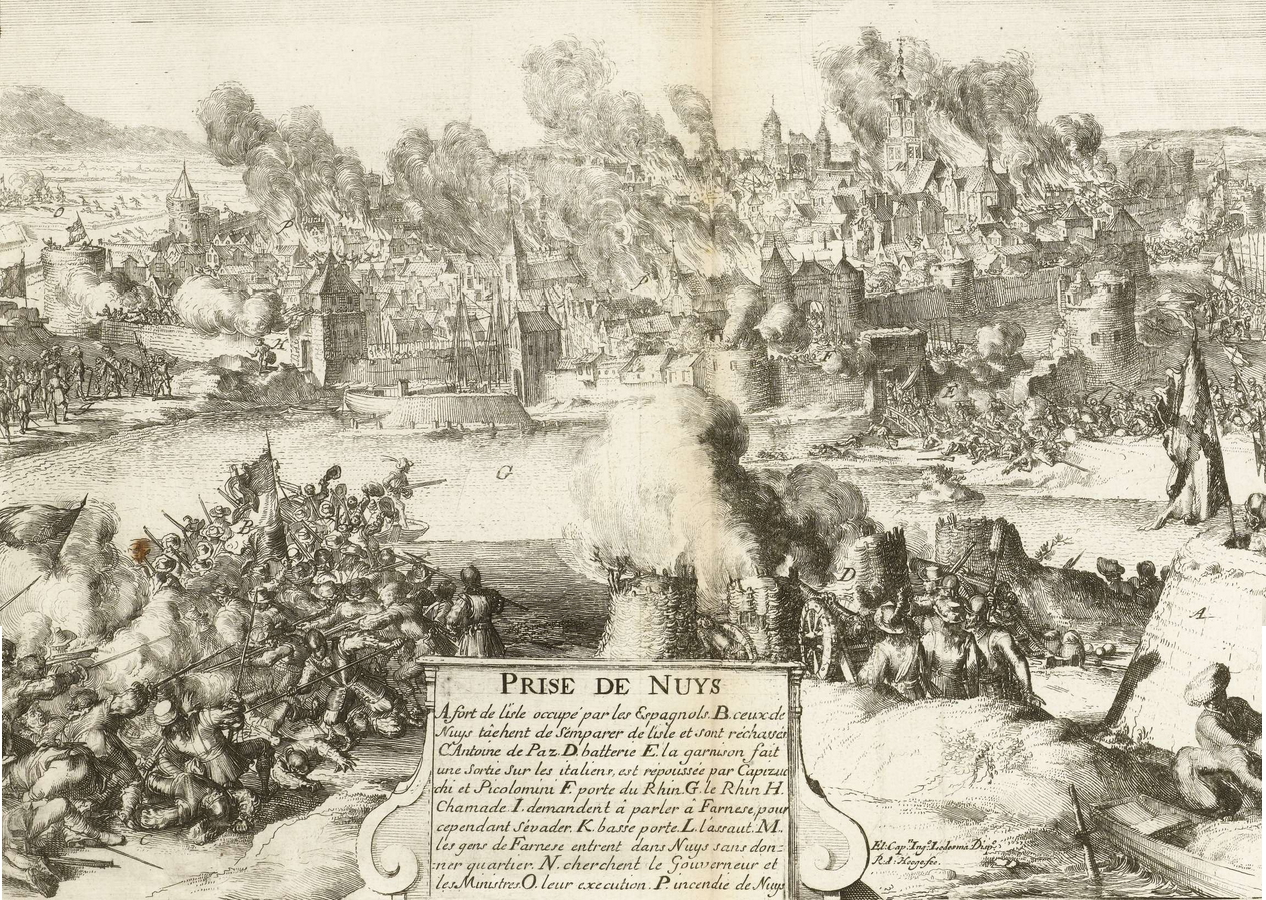|
Destruction Of Neuss
The Destruction of Neuss occurred in July 1586, during the Cologne War. Alexander Farnese, Duke of Parma's troops surrounded the city of Neuss, an important Protestant garrison in the Electorate of Cologne. After the city refused to capitulate, Parma's army reduced the city to rubble through a combination of artillery fire, destructive house-to-house fighting, and plundering; during the battle, a fire started that destroyed most of the rest of the city. Approximately 3000 civilians died, out of a population of around 4500, and the entire garrison was killed. Situation in 1586 Neuss had been seized by supporters of the Protestant Prince-Elector Gebhard Truchsess von Waldburg in February 1586. Adolf, Count of Moers and Neuenahr, reinforced and supplied the city and took most of his troops north, to Moers and Venlo, leaving the young Friedrich Cloedt in command of the city. Cloedt had a garrison of 1600 men, mostly Germans and Dutch soldiers; some had military experience, b ... [...More Info...] [...Related Items...] OR: [Wikipedia] [Google] [Baidu] |
